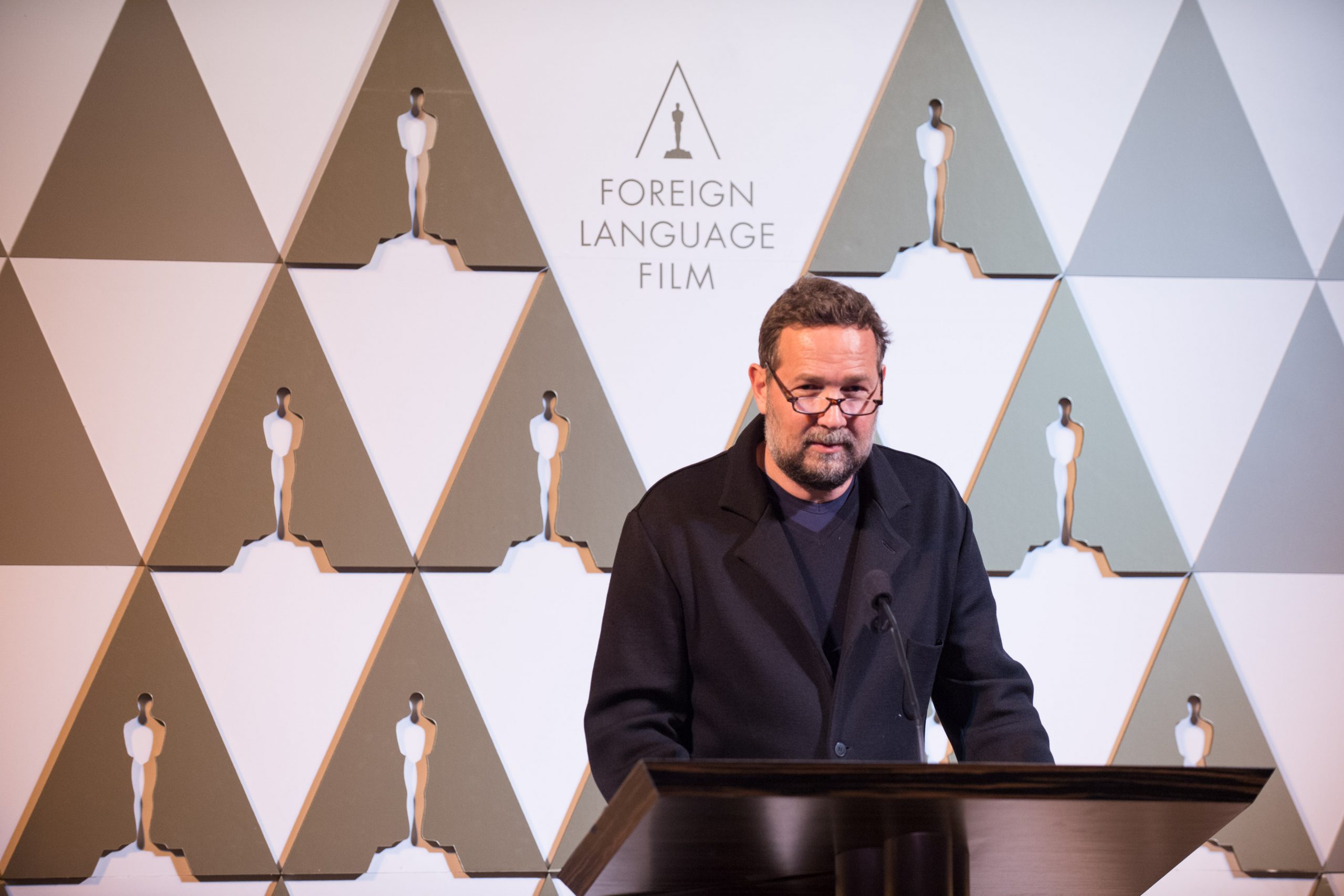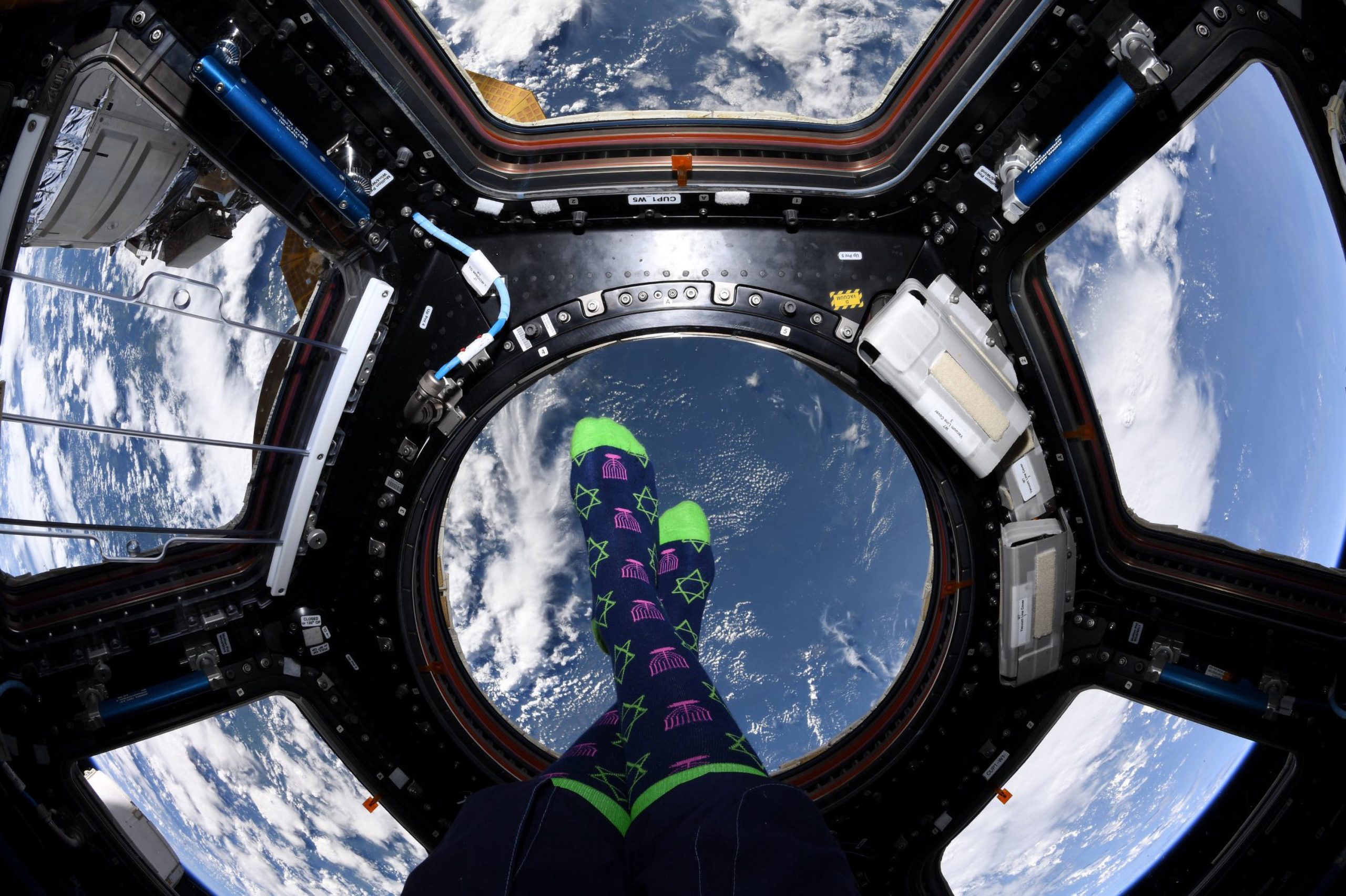
Phedon Papamichael sat down to discuss Ford v Ferrari with Solzy at the Movies during the 2019 Toronto International Film Festival in September.
Ford v Ferrari launched at Telluride with critical acclaim before coming to Toronto. What did you think of the reception?
Phedon Papamichael: We were very pleased. I wasn’t in Telluride this week. We had a sense that this would be an audience pleaser. It’s a traditional Hollywood cinema the way like old-school filmmaking has great solid characters and exciting race footage, of course. We were thinking that we were very hopeful that we will find an audience and despite its longer running time, it really goes by fast. That, of course, is due to Mangold’s ability to really create these solid characters and their relationship and the interaction between each other. I think the dynamics of that friendship has classic qualities that those good old buddy movies have—struggling against the bigger elements, in this case, corporation, then being sort of the outsiders to do things in their own individual ways and against the set norms of things.
What was the camera that you used for the film?
Phedon Papamichael: A large format Alexa LF, which normally requires spherical sentences, but in this case, I really wanted to use anamorphic lenses. The problem being that the standard 2-time anamorphic lenses don’t cover the large sensor of the LF so Dan Sasaki, who is the lens designer, said I can expand those lenses. This is actually the first movie that had expanded anamorphics by adding another glass element that so it could cover the entire sensor, which gives it almost like this medium format look with beautiful fall off in the distance and then still has the anamorphic quality. We used vintage glass so older from the 70c Series anamorphics and then some T Series also for close focus because with Mangold when we do close ups, we’d like to actually physically move a camera closer. We don’t like to just have one camera on a wide angle lens and one on a long lens and hose things down. We’d like to physically close up the space between us and the camera and do close-ups on a wider lens so that way, you always get a sense of the environment in the background in our compositions.
James Mangold is a still photographer as well. His father was a painter. My father was a painter working in the same generation. We kind of grew up with the same influences. Luckily, we have very similar sensibilities to towards framing. We do like to go close with the wider lenses and that form of an aspect ratio, especially in the movie like that, where you have so much going on in the immediate environment and the perspectives and the depths. During the racing shots—all the close ups even—you feel on all the other elements moving in the background in the distance. It’s very important to us not to isolate people who have long lenses and very shallow depth of field.
Is there a particular camera that you like to use?
Phedon Papamichael: I do like the Alexa sensor very much. As far as having to shoot digitally, I would also still never oppose a director would want to shoot film. But I do think terms of with tonality and what the Alexa sensor comes in and me in collaboration with my colorist, Skip Kimball, at EFILM, which we’ve done many collaborations—Nebraska being one of them, which was also shot on an Alexa and had applied film grain. On The Monuments Men, we shot film and digital and match the two very well. This one, of course, also creating very much a film feel. I think the technology is there and the tools are there to approximate a film look very closely now especially with the larger format digital cameras.
As a director of photography, how have your techniques improved over the years?
Phedon Papamichael: Everything you do is an accumulation of all your experiences. I started as a still photographer, so composition was always very important to me. I initially worked in low budget or in still photography or very low budget movies so I was always approaching lighting by maneuvering around the natural light and getting inspired by the natural light, not really fighting that—not over stylizing things. That has prevailed until today. I will always have a logic to the lighting that would never contradict what it could actually be in a natural light environment, of course, modified to the moodiness and the dynamic of the scene, what’s required.
Those initial goals have remained throughout the 45 movies that have done. I also like to think that I can apply very different looks to very different stories. Mousehunt looks completely different than The Million Dollar Hotel or Nebraska, obviously being black and white. I don’t really want to be recognized when somebody sees a film that I shot where they go, “Oh, Phedon Papamichael shot that!” There are some DPs that have their very strong handwriting. I’ve tried to adapt to the story in the style of the director. Over the decades through experience, you become more handy in working and bracing what you’re given, work with a natural light, and minimize the equipment. I don’t like to overproduce or over light things—so just maneuvering on big exteriors. Like on this movie, we shot a lot of exteriors. How you lay out the day and how you maneuver through the day, deciding what shots to do, in what order, really sort of dictates how you take advantage of the natural light situation.

What was the most challenging aspect of shooting Ford v Ferrari?
Phedon Papamichael: Conveying with speed of the cars because it’s very hard to photograph cars at these speeds. They’re not quite going actual race speed, which was an insane 200 miles an hour into motion straight away. Our cars were doing over 100 miles an hour at times and finding a way to photograph it in a way where that speed gets conveyed to the audience—we discovered in early testing that you have to be very close to the vehicles, not just panning around them the way you see TV coverage of races. You want to be very close to the car, low to the ground on wider lenses, have foreground elements cut in, wipe, and, that was very challenging because the tools available—the G forces—you can’t use traditional crane arms like the arm, which is swing around, so we have to use different rigs. We also discovered that a lot of the simple techniques, just hard mounting cameras to the chassis of the car and embracing all the vibrations that you get from having a camera just riding on the car long the chassis like that is also the best way to get the close-ups and the coverage of Christian Bale’s face and rather than doing it on blue screen and shaking the car—just seeing the interactive light moving around and seeing his face and his helmet vibrate is really the most effective way to do that because as spectacular as the driving stuff is, it always has to be hinged and based upon what he’s emotionally experiencing. For the audience really to enjoy the sequences, you want to know what it feels like to be in this car and be in this little insane cockpit fueled with high explosive gasoline and just the danger they were in.
You’ve worked with a number of filmmakers repeatedly including James Mangold, Alexander Payne, and Wim Wenders. What is it about these filmmakers that keeps you coming back to collaborate on more projects?
Phedon Papamichael: They’re filmmakers that make the kind of movies that always have a human story—reality-based characters. I’m not so inspired by superhero, supernatural stories. I mean, I do like real characters. Alexander, of course, being always, his humor, the way he creates these characters, and the writing. Jim, again, the movies we did—Walk The Line—all have a strong protagonist and emotional interactions that that have become the center of the story. Wim Wenders, also.
It’s just the kind of films that I feel drawn to and ultimately inspire me that are not hugely technical and also more traditional in their approach camera-wise. They have movement but only when not drawing a lot of attention, use it only when working dramatically with a performance and also, the way they like to use light, the natural use of light. Mangold is a still photographer as well. We have very similar instincts about the photography where I’m always very much in sync. It’s almost like a brother—it’s our fifth movie together so there’s a language we’ve discovered that luckily for each other, we have very similar taste. With Alexander, we have similar sensibilities in terms of humor and it just becomes very enjoyable. Wim Wenders, of course, I grew up inspired by Robin Miller and all his work in the 70s because I grew up in Munich and was exposed to European cinema. The French New Wave and Italian realism were all the influences that I grew up with.
These are filmmakers—Alexander and Mangold, we’re all more or less the same age and we all have very similar background in terms of what inspired us, what films we liked. It’s nice, and I do like knowing what kind of director I’m going into the next endeavor with. It’s always rolling the dice like every casino has a hundred different ways to make a movie. You never quite know when you start with a new director if you’re going really be in sync and enjoy the experience.
Last year (2018) marked the 25th anniversary of Cool Runnings while this year (2019) marks the 25th anniversary of John Candy’s passing. Do you have any fun memories of working on the film?
Phedon Papamichael: Well, that was a very special film for me because it was actually my first studio job. I had never done the studio film before. It was Disney, again. Having read the script, I go, Well, this could be stupid, could be a silly movie, I don’t know but I’m excited. I’m doing a studio movie. It was a bigger budget for me at that time. It just turned out to be such a surprise how, just again, proof when you have great characters. John Candy was truly inspirational to watch and one of the greatest human beings that I’ve ever had the privilege to work with—just charming, funny, and naturally funny. I couldn’t believe it when I saw the film finally at a screening. I mean, I always thought, well, this movie, I don’t know how good it’s going to be. In the movie, it’s just me going like, “Yeah, Jamaica!” Cheering and standing up and everybody. I don’t know—a rarity of so many people going, Oh, you did Cool Runnings? You know, I can’t believe that’s like so long—I mean, that’s one of my favorite movies. Often I find at the beginning that they’re joking and mocking me, but that actually, it’s true. That was a great experience.
I fell in love with bobsledding because of that film!







